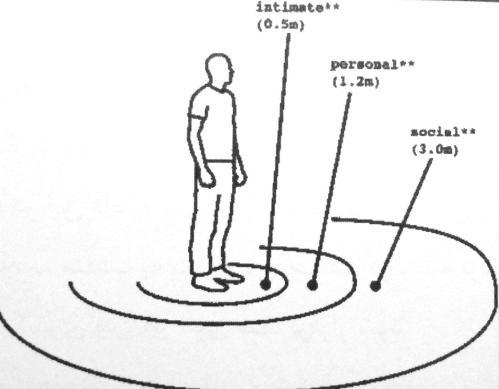What is “personal space”? The notion of it was introduced by anthropologist Edward T. Hall[figure 1]in 1966, who created the concept of proxemics. It is the study of human use of space and the effects that population density has on behavior, communication, and social interaction.[figure 2] In his book, The Hidden Dimension, he describes the subjective dimensions that surround each person, as well as the physical distances they try to maintain from other people based on cultural upbringing and personal experience. So expectation and understanding of personal space are flexible and difficult to measure. In proxemic theory, he describes that humans have four distinct territories in which to defend or interact with others according to their own standards. It is the Public territory, Interactive territory, Home Territory, and Body Territory.
Public territory: a place where one may freely enter. This type of territory is rarely in the constant control of just one person. However, people might come to temporarily own areas of public territory.
Interactional territory: a place where people congregate informally
Home territory: a place where people continuously have control over their individual territory
Body territory: the space immediately surrounding us
Neuroscientist Michael Graziano said, as a scientific approach to the personal space, “the brain computes a buffer zone around the body.” Human instinct, in this case, is trying to keep a certain distance from the body from the outside in order to protect ourselves. Over millions of years our brains have evolved into mechanisms for the self-protection of our bodies and our need for personal space. It is revealed to us in a simple way all around us, and exists even if we are oblivious to it in everyday life. For example, it can be compared to walking through a doorway without bumping your shoulder. We do not even consider it because we have a system in our brains that unconsciously monitors where obstacles are and controls our movement. Humans are naturally trying to establish a safe distance between one individual and the others. We all have an invisible bubble around us.


